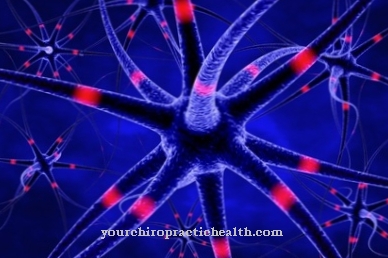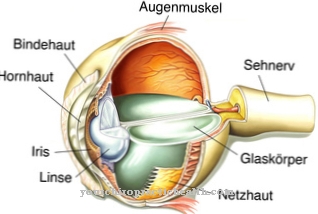Of the Circulus vitiosus is also colloquially called Vicious circle designated. It is a pathophysiological process that leads to illness or aggravates existing illnesses.
What is the vicious circle?

The term circulus vitiosus comes from the Latin. 'Circulus' means 'circle' and 'vitiosus' can be translated as 'harmful'. It is a pathophysiological process based on positive feedback. In the case of positive feedback, a variable has a reinforcing effect on itself.
In the vicious circle, however, there are often several influencing factors that are mutually reinforcing. Examples of diseases that are based on a vicious circle or in which a vicious circle develops in the course of the disease are type 2 diabetes mellitus, thyrotoxic crisis, heart failure and multi-organ failure.
Function & task
The vicious circle is basically of no use to the human body, as it is a pathophysiological process. Pathophysiology is the study of pathologically altered body functions. The opposite of pathophysiological processes are physiological processes.
Often, however, there is a positive body reaction at the beginning of a vicious circle. The body tries to correct an error or a malfunction with a specific reaction. However, this mechanism leads to changes that worsen the underlying disorder. This will maintain or even worsen the disease.
Illnesses & ailments
An example of a vicious circle is insulin resistance in type 2 diabetes mellitus. Diabetes mellitus is popularly known as diabetes. The disease is a metabolic disease and is associated with permanently elevated blood sugar levels. Typical symptoms of the disease are intense thirst, increased urination, susceptibility to infections, fatigue and weight loss.
If the diabetes is not treated or treated too late, numerous damage to the body can occur. The increased blood sugar values damage the blood vessels in particular. This can lead to diseases of the eyes and kidneys. Diabetic retinopathy is the leading cause of blindness in the western world. The larger blood vessels are also damaged. Diabetics are at increased risk of having a stroke or heart attack.
Long before manifest type 2 diabetes mellitus appears, there is an insulin resistance syndrome, sometimes for many years. Hereditary factors and obesity in particular seem to play a role in the development of this syndrome.
When sugar enters the body with food, it is broken down in the intestine and ultimately ends up in the blood as glucose. So that the glucose can now get from the blood to the cells, insulin is required. This hormone is produced by the pancreas.
In insulin resistance, the cells respond less to insulin than the cells of a healthy person. This means that there is always too much sugar in the blood. In response to this excess sugar (hyperglycaemia), the pancreas produces more insulin. The more insulin hits the cells' insulin receptors, the less they react to it. As a result, less and less sugar is transported into the cells and the blood sugar level continues to rise accordingly. This stimulates the pancreas to produce more insulin. The cells in this vicious circle are becoming more and more insulin resistant.
Another vicious circle can be found with heart failure. Heart failure is heart failure. The heart is no longer able to carry the amount of blood the body needs. Heart failure can occur acute or chronic and have different causes. Causes of acute heart failure are, for example, a heart attack or a pulmonary embolism. Chronic heart failure can be caused by chronic high blood pressure or lung disease.
The inadequate pumping capacity of the heart in congestive heart failure leads to an insufficient supply of the body. This is registered in different places in the body. In particular, the falling blood pressure is seen by the receptors as an alarm signal. The body reacts by narrowing the blood vessels. The heart's beating power is also increased, it pumps more strongly, but usually more slowly.
This increase in impact is brought about by the hormone norepinephrine. Since the stroke volume is permanently too low in heart failure, norepinephrine constantly binds to the receptors of the heart. Similar to the insulin receptors in diabetes mellitus, these become resistant at some point. The impact force remains low. However, the blood vessels still respond to norepinephrine. They stay narrowed. Now the already weak and stressed heart has to continuously pump against high pressure in the blood vessels. As a result of this vicious circle, the condition of the heart worsens.
The thyrotoxic crisis is also based on a vicious circle. The thyrotoxic crisis leads to a life-threatening derailment of the metabolism. Usually this derailment arises from an already existing overactive thyroid gland (hyperthyroidism). Normally the thyroid hormones T3 and T4 are only found in small amounts in the blood. Most of them are bound to blood proteins. In the thyrotoxic crisis, there is a sudden release of unbound thyroid hormones. This shows strong symptoms of hyperthyroidism, such as severe cardiac arrhythmias, overheating or gastrointestinal complaints.
Through a positive feedback mechanism, these organ complications in turn affect the production of thyroid hormones. More thyroid hormones are formed. These in turn worsen the symptoms. The aim of therapy is therefore to interrupt the vicious circle of the thyrotoxic crisis.



























